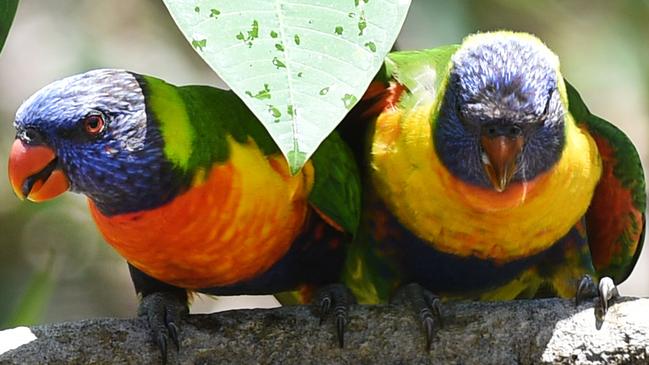Lorikeet Paralysis Syndrome on the rise throughout Queensland
The disease is caused by unknown toxins which leave the birds paralysed and is on the rise across Queensland, but Gympie’s neighbouring shire appears to have a much worse case.

Gympie
Don't miss out on the headlines from Gympie. Followed categories will be added to My News.
If you have ever been near Memorial Park in the centre of Gympie on dusk or first thing in the morning you could not miss the thousands of lorikeets that roost there every night.
But all is not well in the world of lorikeets.
A mysterious syndrome leaving the native Australian parrots paralysed is on the rise in Queensland with no known cause.
Lorikeet Paralysis Syndrome is found primarily in wild rainbow lorikeets where unknown toxins paralyse the birds, leaving them unable to fly.
RSPCA wildlife vet Claude Lacasse said LPS was first noticed 10 years ago and was suspected to involve a plant or fruit the birds eat.
LPS was seasonal and seen during the warmer months of the year, she said.
“It starts in October, and then there’s a lot of them during December, January and February, but during the winter months we don’t see any,”Dr Lacasse said.
The diseased birds require intensive care, which Dr Lacasse said could take several months before the birds were strong enough to be released into the wild again.
Lorikeets in the Gympie region were not heavily affected by LPS, despite the high population in the area.
“We’ve only seen a few cases in Gympie, but they’re mainly in Noosa for some reason,” she said.
She said this was because the suspected fruit or plant was less common in the Gympie region.
Dr Lacasse’ advice to anyone finding a diseased bird was to take them to a vet, who could refer them to a wildlife carer or centre.
She said a telltale sign of the syndrome was if the bird was unable to blink, and had “a weird voice”.
A project study from the University of Sydney has been launched to determine the cause of the syndrome, and asks “citizen scientists” to record observations of what the birds eat.
Click here to get involved.




